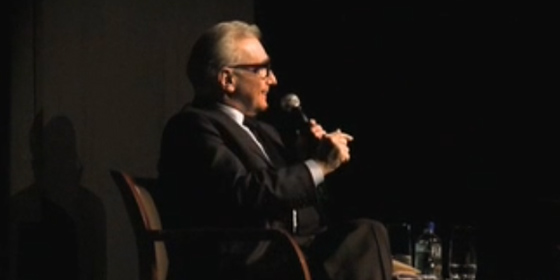Martin Scorsese has been a tireless advocate for film preservation and last year gave a fascinating hour long talk at the Los Angeles County Museum of Art.
Speaking to Michael Govan, the director of the LACMA, Scorsese discusses a variety of topics and you can watch the full interview here, which begins at 6:06:
Amongst the things they cover include:
- Moving to LA in the 1970s and watching prints of old films
- The change from the 3-strip camera process to Eastman color
- Realising the quality of film prints were declining after watching a double bill of Niagra (1953) and The Seven Year Itch (1955)
- The reason a proper print for Luchino Visconti’s The Leopard (1960) didn’t exist for a long time
- How his quest for preserving film prints led to the creation of The Film Foundation in the late 1980s
- The fire in the mid-1970s that destroyed the original negative of Citizen Kane (1941)
- The films that have benefited from the foundation’s work, such as restored prints of Shadow of a Doubt (1943), Paths of Glory (1957) and Once Upon a Time in the West (1969).
- How the Film Foundation had restored The Red Shoes (1948) from an original camera negative that was ‘mouldy’
- The importance of preservation for inspiring the next generation of directors
- How the entertainment aspect of cinema created a stigma around it being considered an art form
- The meaning of a cut
- A parallel tracking shot in Blow Up (1966)
- How he came to appreciate the films of Frank Borzage after the age of 50
- How plot is the ‘hardest thing to shoot’
- The influence of the shower scene in Psycho (1960) on a fight scene in Raging Bull (1980)
- Why Hitchcock is such a fascinating director
- What makes cinema unique as an art
- How he would shoot a 3D film (he has since made Hugo)
- Shooting the HBO mini-series Boardwalk Empire
- The debate on grain and whether digital restorations should remove it or not
Not only is it like listening to the best film professor in history, but it is a genuinely illuminating discussion that touches upon the art and technique of the medium that has meant so much to him.
> Martin Scorsese at Wikipedia
> The Film Foundation
> LAMCA and their Vimeo Channel
